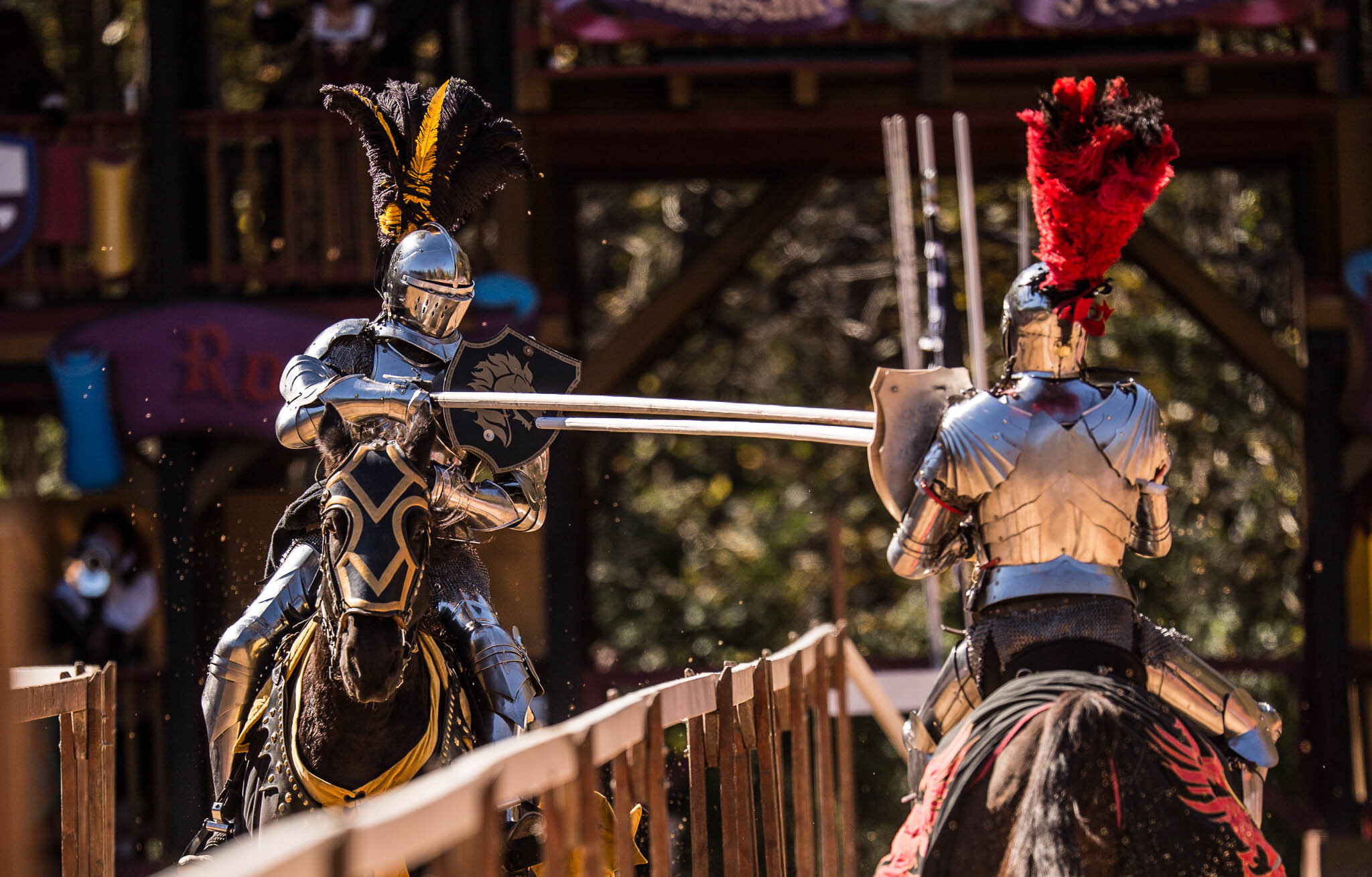
Knights strap on the heavy suits of armor, settle astride snorting chargers, take up their lances and tilt with each other on a large tournament field within the Festival. These Knights (actually stunt riders and actors) battle three times daily.
Weekend Joust Schedule:
12:00 - Battle for the Queen's Favor
2:15 - The Tournament of Champions
4:15 - A Joust to the Death
This modern representation of a Renaissance era jousting tournament comes from a historical time of high ideals, noble causes, and grand chivalry. By the middle 1200’s, the joust emerged as the favored way to prove which of two (or more) knights was better. Most contests were a “Joust a Plaisir” (for pleasure) in which a winner was declared on the basis of points scored, though some were still conducted “a l’Outrance” (to the death). In the sporting version, the knights’ swords were dulled and their lances tipped with “coronals” (little crowns) to prevent their penetrating a joint in the armor. Some authorities believe that the lances were deliberately weakened, a precaution still in effect today.
The origins of jousting are believed to be in classical Rome, but the “sport” rose to its greatest popularity in Europe by the 1400’s. At first, the battles served more to hone fighting skills than to provide popular diversion. But in peaceful times, a knight needed a way to retain his skills. The Jousts were great money-makers for the victors; instead of claiming mere points, the winning team held the losers for ransom, often accepting their horses and armor as payment.
The training of a knight included spearing a small ring, some on stanchions and some tossed in the air, and quintain jousting. In quintain jousting, the knight tilted with a mock opponent, which sat on a revolving pedestal. If he was inaccurate or too slow, the jouster might get whacked by the sand bag on the other end of the contraption. These quintain devices are thought to be the precursors of Victorian carrousels. Many turn-of-the-century carrousels had a variety of things to grab, including a brass ring that entitled the bearer to a free ride.
The joust became very civilized and formalized, though severe injuries were common. According to the chronicler of an English tournament in 1256, many of the noble contestants “never again recovered their health”. The many deaths which resulted from such “sport” let Popes and English kings to ban jousting tournaments, though English subjects often persisted and were repeatedly excommunicated.
England’s King Edward III put a temporary public ban on jousting in 1370 but an intrepid troupe of stunt riders and actors brought it back in the 1980’s. Somewhat similar to professional wrestling, victor and vanquished are usually agreed to beforehand. As in many medieval tournaments, even the exact number of blows is often settled. Yet, clad in authentic looking breastplates and helmets, wielding heavy lances, maces and blunted swords, they will thrill the throngs here at the Carolina Renaissance Festival!










